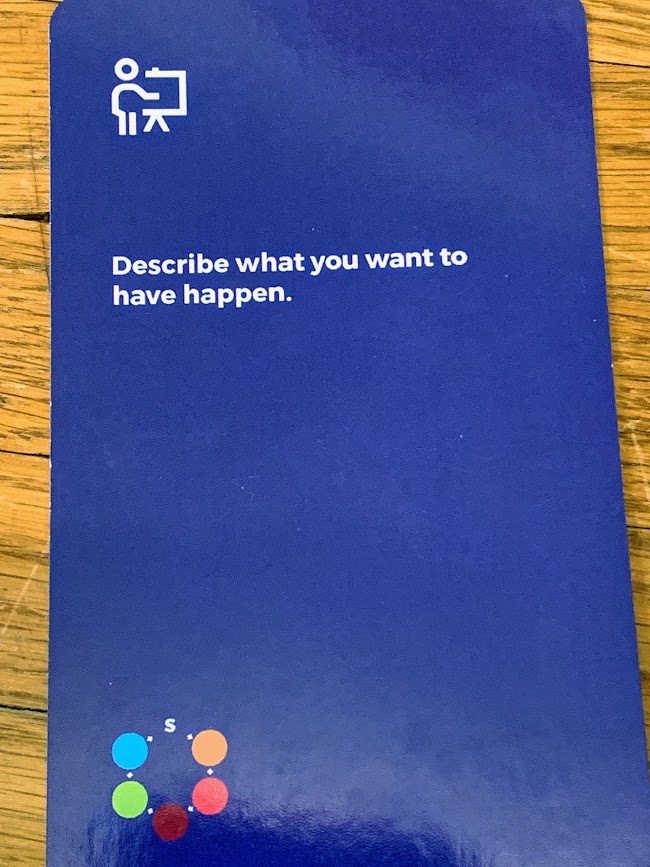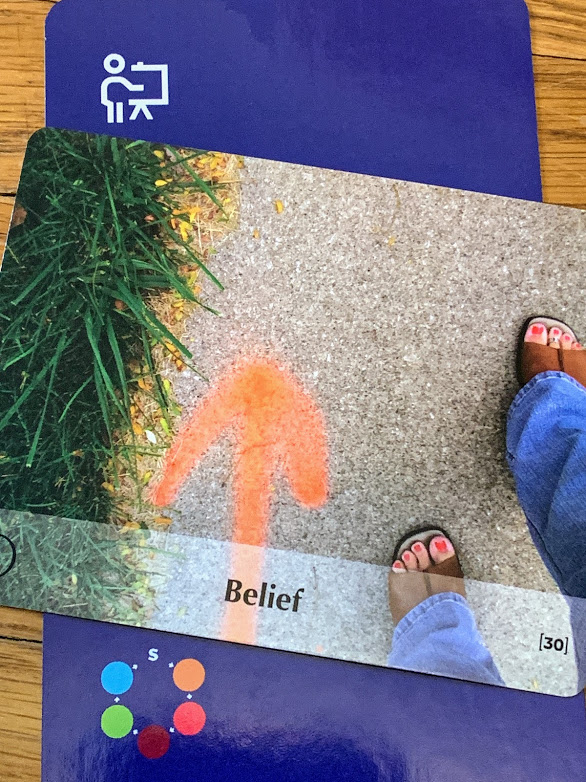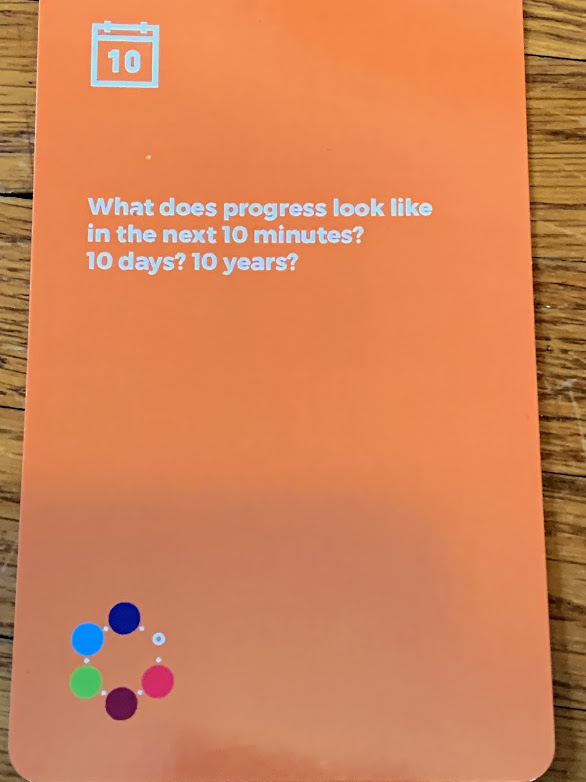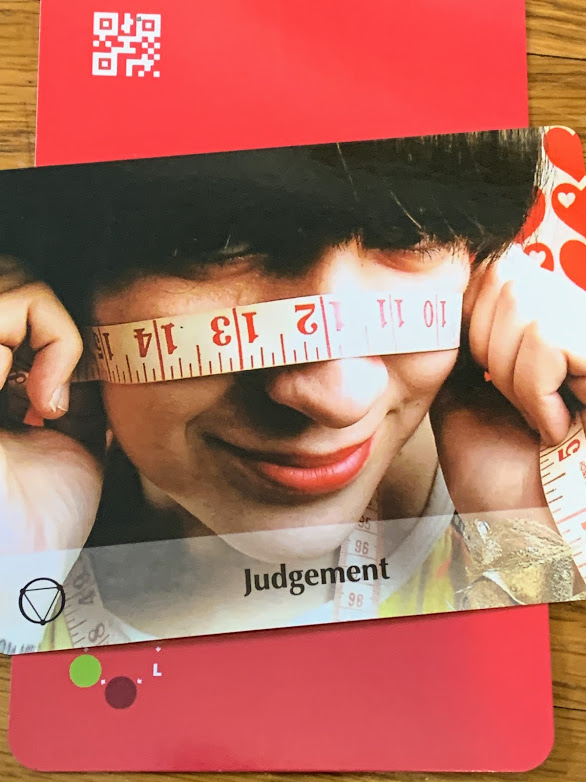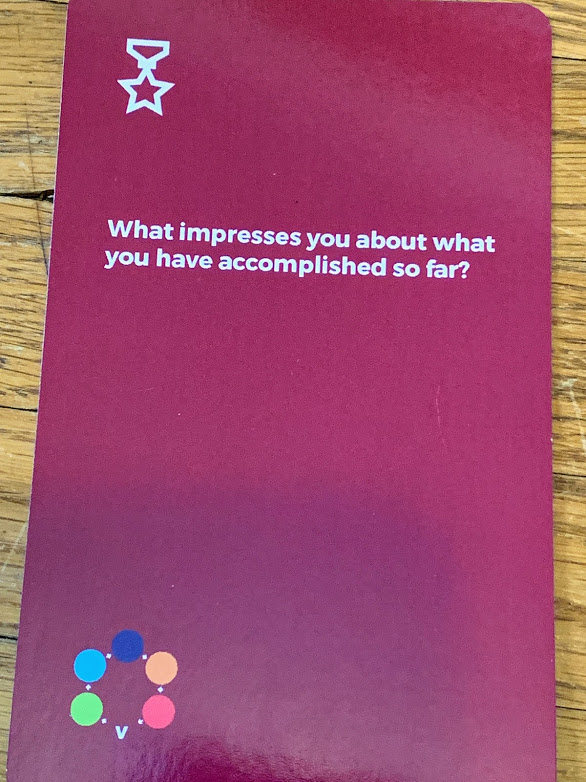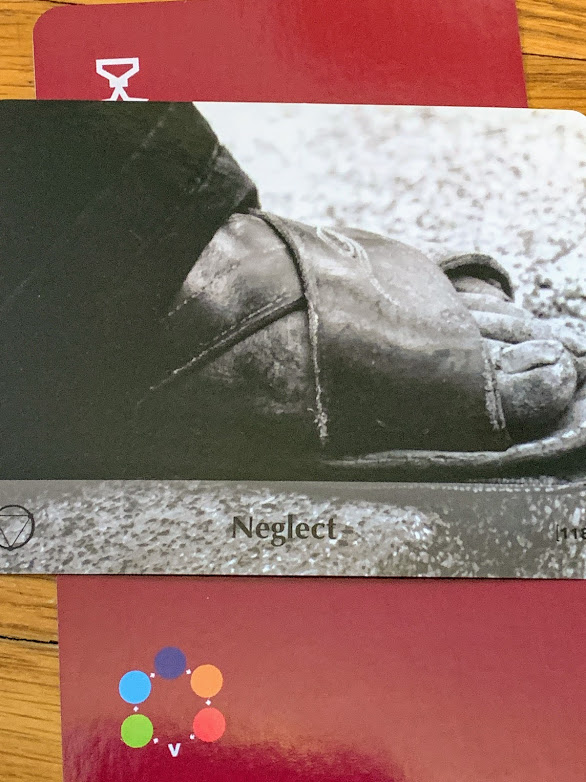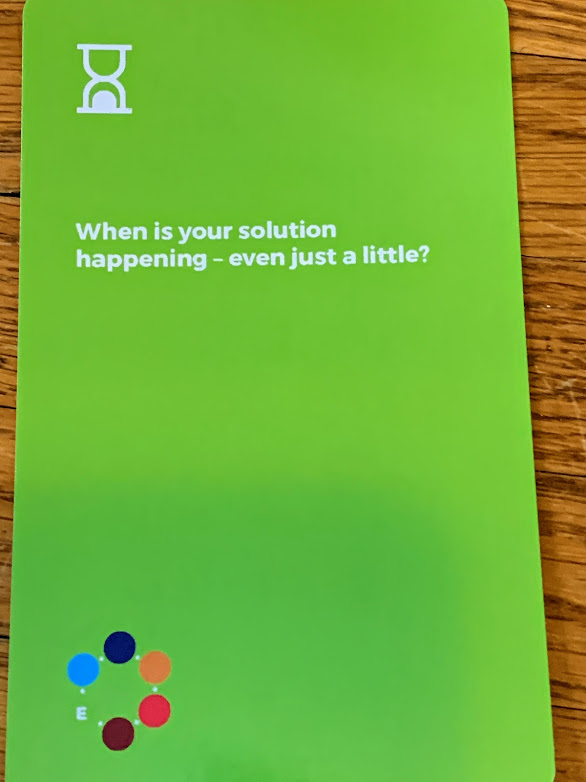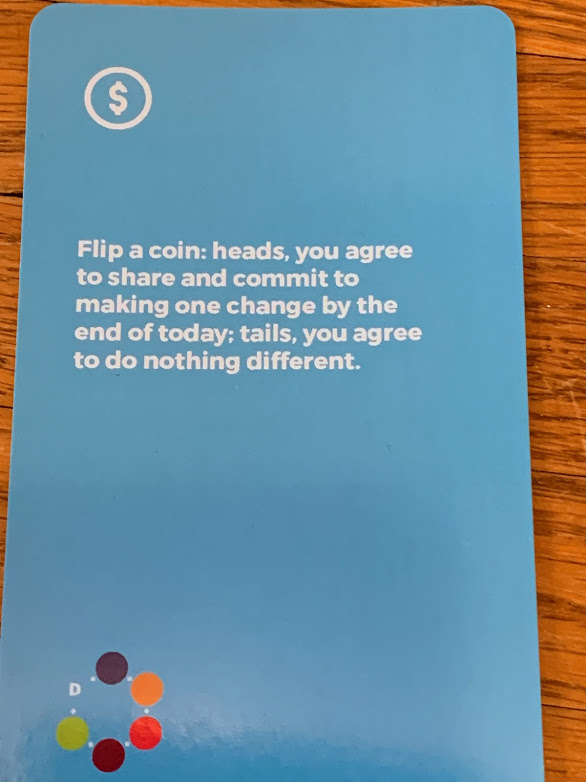Whew! Every day I feel a sense of control, and the loss of control, then some control, then I talk to a manager or a team I’m working with … and we all are at different points while still being together. This feeling has always been there, and covid19 has made it more obvious.
As you work through problems and challenges, we understand that continually grinding on the challenge often leaves you stuck(er), frustrated, and annoyed.
Thinking through TRIZ (theory of inventive problem solving). Moving your challenge from a specific to an abstract or general challenge will open and construct novel or unique solutions. And the use of images or pattern breakers will invite novel solutions that may not have seemed evident until your brain swirls and melds for a bit.
In the video above and images below, I share the use of the SOLVEDcards with another coaching and discussion product called Points of You.
Using the SOLVEDquestion card and randomly an image card to create novel and different ways to progress on a challenge.
SOLVEDcards steps to navigate complexity
- Write or describe a current problem or situation that you feel confused or unsure about, and you want to make progress.
- Read in the S(ituation) question – and look at the image on the card.
- Write or speak your response.
- Continue through the other SOLVEDcards and images.
- Try some of the ideas you discover;
- tomorrow and in the future, take notice of what is happening you want to have happen more often and what is happening you want to have happen less often.
Navigating complexity once does not mean that you will always have calm waters.
Complexity, like lightning storms, arrives and SCREAMS for a time; you navigate it and learn, things calm, and it happens again.
Using SOLVED to develop pattern recognition and building multiple experiences will increase your work complexity and skills to make sense of unknown and unknowable challenges.
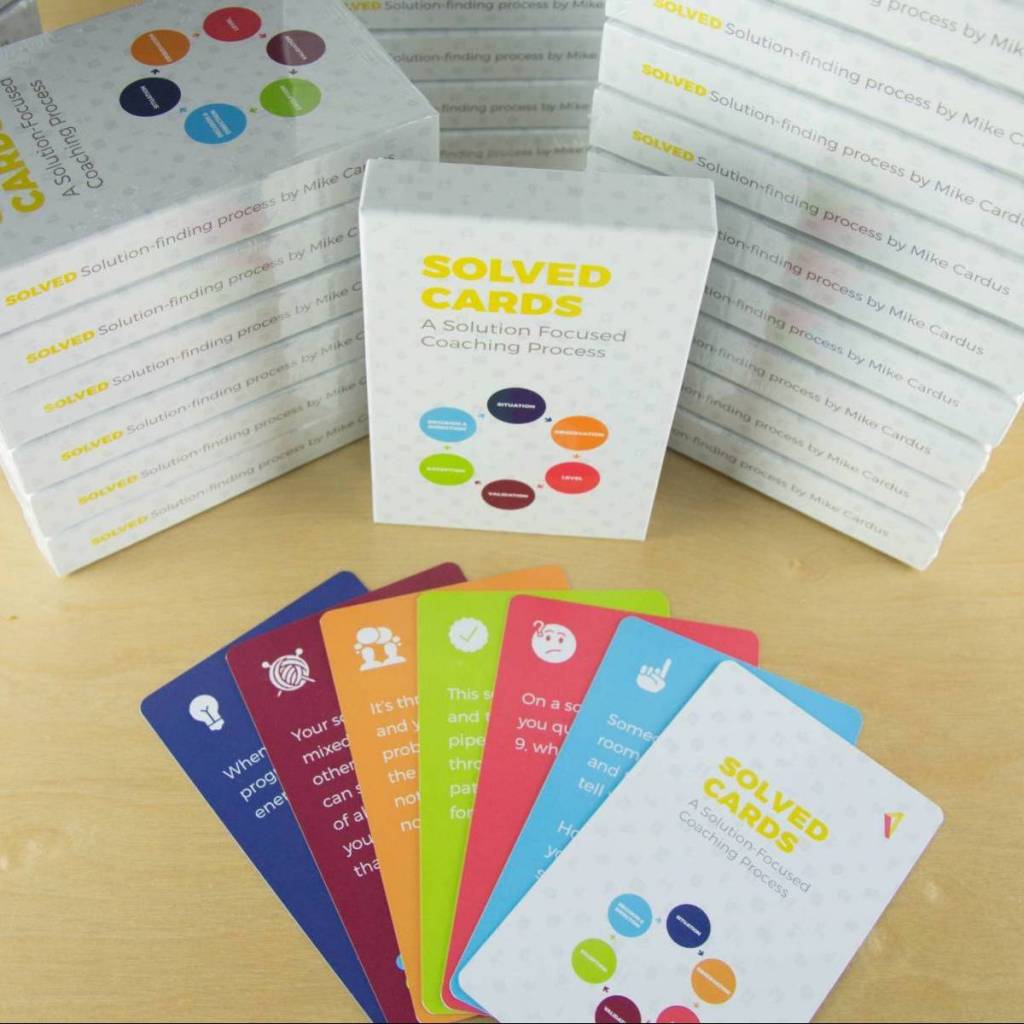
SOLVED CARDS
Make change happen with a problem-solving approach that’s focused on solutions.


